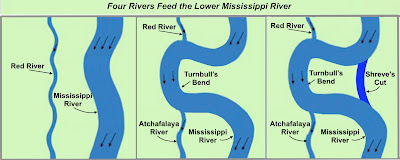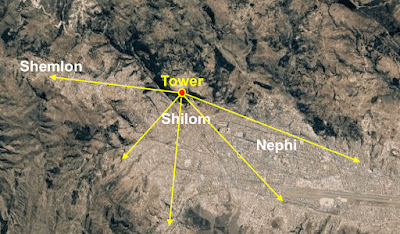Unfortunately, this has led to numerous misunderstandings regarding the simple and factual, though brief, history of the Jaredite people and the barges in which they crossed the ocean. Take, as an example, one such comment written by Clark Goble, writing on “Times and Seasons” website of February 1, 2017, under the heading “Some Thoughts on Jaredites Barges.”
Under the overall understanding of “Times and Seasons is a place to gather and discuss ideas of interest to faithful Lattr-day Saints,” he writes:
1. “We should note the text of Ether is a summarization by Moroni written more than a thousand years later. It’s likely that Moroni is not at all familiar with sailing. We should keep this in mind when reading the text. Moroni is likely bringing in assumptions from his ignorance much like readers of the Book of Mormon do. That is, we should read Ether recognizing it’s a third hand account and thus may distort the underlying narrative and descriptions we don’t have access to. We shouldn’t read the text of Ether as a “god’s eye view” of what was going on. Rather Moroni will read the 24 plates in terms of his own religious and cultural assumptions. What we have is an interpretation and paraphrase of a different text.”
To translate the record, Joseph placed a "seer stone" in a hat and held it tightly against his face to block out any light, and looked at the writing that appeared on the stone. According to Martin Harris as told to Seventy and Church Historian Brigham H. Roberts, "By aid of the Seer Stone sentences would appear and were read by the prophet and written by Martin and when finished he would say "written," and if correctly written, the sentence would disappear and another appear in its place; but if not written correctly it remained until corrected, so that the translation was just as it was engraven on the plates precisely in the language then used" (CHC 1:29)
He then adds, “Wherefore the Lord hath commanded me to write them; and I have written them. And he commanded me that I should seal them up; and he also hath commanded that I should seal up the interpretation thereof; wherefore I have sealed up the interpreters, according to the commandment of the Lord” (Ether 4:5, emphasis added). And of these writings (the Book of Ether), the Lord frankly said, “And he that will contend against the word of the Lord, let him be accursed; and he that shall deny these things, let him be accursed; for unto them will I show no greater things, saith Jesus Christ; for I am he who speaketh” (Ether 4:8, emphasis added). As Moroni further added, “And now I, Moroni, have written the words which were commanded me” (Ether 5:1, emphasis added).
Thus, it cannot be justified to say: “it’s a third hand account and thus may distort the underlying narrative and descriptions,” for Moroni wrote that which the Lord told him to write.
2. Another comment from Goble states: “The assumption of a submarine like vessel seems unlikely. I’d imagine that most of the time they were out of the vessel and they only went into the sealed section during storms. While Mormon describes their encountering many storms verse 6 suggests this wasn’t the status quo. The use of the sealed part of the vessel seems primarily to survive being flipped and hit by waves.”
It should be noted that Ether makes it clear that “Ye shall be as a whale in the midst of the sea; for the mountain waves shall dash upon you. Nevertheless, I will bring you up again out of the depths of the sea; for the winds have gone forth out of my mouth, and also the rains and the floods have I sent forth” (Ether 2:24). In this case, the comparison with a whale should be clearly understood—whales spend little time on the surface, and most of their time in the depths of the sea. After all, unlike fish that use gills to take oxygen from the water, whales, like dolphins, are mammals and have lungs (as do humans) and must surface from time to time to breathe air. The point is, they spend a good portion of their lives underwater. Thus we might understand that the Jaredite barges would spend at least some of their time underwater, or else the comparison the Lord makes is meaningless.
The Lord also asks the Brother of Jared, “Therefore what will ye that I should prepare for you that ye may have light when ye are swallowed up in the depths of the sea?” (Ether 2:25, emphasis added); and also “they were many times buried in the depths of the sea, because of the mountain waves which broke upon them, and also the great and terrible tempests which were caused by the fierceness of the wind. And it came to pass that when they were buried in the deep there was no water that could hurt them, their vessels being tight like unto a dish, and also they were tight like unto the ark of Noah; therefore when they were encompassed about by many waters they did cry unto the Lord, and he did bring them forth again upon the top of the waters” (Ether 6:6-7, emphasis added).
After all, to “be buried many times in the depth of the sea,” is not indicative of merely having big waves fall upon the vessel—“buried in the depths of the sea” has a very clear meaning since the word “bury” means “completely covered,” “to cover and conceal from sight,” “entomb,” as “buried in the deep.”
In addition, if they were out in the open air most of the time, as Goble suggests, only going into the "sealed portion" on occasion, they why cut holes in the top and the bottom of the vessel for air? And if they knew they were going to be submerged and went into the "sealed portion," how could they be surprised when water came in the open hole and need to close it up as the Lord commanded? (Ether 2:20)
3. What is also interesting is Goble’s comment about the barges themselves. He states: “It’s not quite clear why Joseph chose the word “barge” to describe the vessel. (Nor really for many word choices in the Book of Mormon) My guess is that it was tied to the barges on the canals near where he lived...These barges were often pulled by horses that were on the side of the canal…It’s worth noting though that these canal barges don’t fit the description we have in the Book of Mormon anymore than miniature Noah’s arks do. While I don’t want to dismiss the word choice entirely, I think it leads us astray more than it informs given the text.”
Unfortunately, Goble evidently does not know what the word “barge” means, or why it was used here. First of all, the word “barge,” which is used in both cases, found in Ether 2:8 and Ether 2:16, in the building of both types of barges, means several different types of vessels, such as: “pleasure boat,” “boat of state,” large or small “flat-bottomed vessel of burthen” (carries a load or freight or passengers), “pilot boat,” “towed boat,” “houseboat” barracks barge, “lighter,” “wherry,” “canal boat,” “tub boat,” “trow,” or “Type B Water Barge” (Navy), as well as “submersible barge” or submarine.
The word “barge” comes from Vulgar Latin “barga,” meaning “any small boat,” and from Old French “barge” meaning “boat.” Anciently, a barge was any boat that carried a cargo, typically along inland waterways, both unpowered (towed by another boat or by human [burlak] or animals along a towpath) or self-propelled (pole boats or current drift boats, or later chain boats) and often referred to as cargo barges.
Thus, the term barge as used by Joseph Smith in his translation covers several types of vessels, and was chosen because, at least known to the Spirit, if not Joseph, that the original author did not mean the same type of vessel was built in both cases, but that the manner in which they were built was similar, which could mean that the Lord gave instruction and the Brother of Jared carried out the instructions, as opposed to the Brother of Jared coming up with his own plan or method of construction.
(See the next post, “Jaredite Barges – Their Construction – Part II,” for more information and further examples of Goble’s comments and our responses about the Jaredite barges)


























